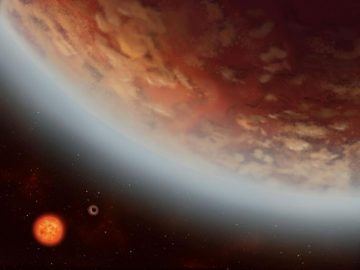Jay Bennett in Smithsonian:
 Exoplanet science has literally opened new worlds to study, with planets populating the galaxy unlike anything in our small solar system. Hot Jupiters whip around their stars in just days, burning at thousands of degrees. Super Earths—rocky planets that are more massive than our own—offer intriguing targets to study for signs of life. One planet, called K2-18b, sits approximately 110 light-years away from Earth. It’s larger than our planet, about 8.6 times the mass, and bigger in size at about 2.7 times the radius. These types of planets are commonly referred to as mini-Neptunes, thought to have rocky or icy cores surrounded by expansive atmospheres, and in recent years, scientists have found that they are extremely common across the galaxy.
Exoplanet science has literally opened new worlds to study, with planets populating the galaxy unlike anything in our small solar system. Hot Jupiters whip around their stars in just days, burning at thousands of degrees. Super Earths—rocky planets that are more massive than our own—offer intriguing targets to study for signs of life. One planet, called K2-18b, sits approximately 110 light-years away from Earth. It’s larger than our planet, about 8.6 times the mass, and bigger in size at about 2.7 times the radius. These types of planets are commonly referred to as mini-Neptunes, thought to have rocky or icy cores surrounded by expansive atmospheres, and in recent years, scientists have found that they are extremely common across the galaxy.
K2-18b is enveloped by a large atmosphere of mostly hydrogen, and new research, using observations from the Hubble Space Telescope, reveals that K2-18b’s atmosphere also contains water molecules in the form of vapor and possibly clouds that contain liquid droplets of H2O. The finding is the first detection of water on an exoplanet in the habitable zone, where the water molecules could be liquid, making it an exciting step toward finding a planet that could support life as we know it. “This planet is definitely smaller than any other planet water has been detected in, and it is also colder,” says Laura Schaefer, an assistant professor of geological sciences at Stanford who studies planetary atmospheres and was not involved in the new research.
More here.
